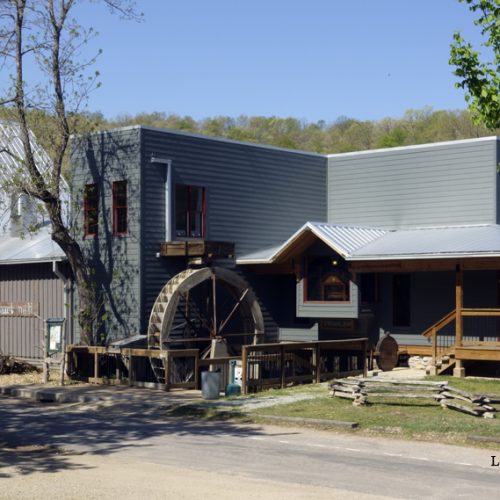This past spring, we forayed into Arkansas, in search of old mills. I had heard about the War Eagle Mill, located 15 miles east of Rogers, particularly in reference to a fall fair held there. The site boasts the claim of being the “sole working mill in Arkansas.” Complete with an undershot waterwheel (perhaps the only one in the nation that still works), the mill offers demonstrations of how the equipment once worked, too. I knew it had to be on the “list.”
By the way, down the road two miles, the War Eagle Mill Food Group grinds flour and cornmeal and distributes it nationwide. In fact, you can order it online here.
The story of how this beautiful old building and surrounding acreage evolved – from a settler’s bread-and-butter business to a modern day festival grounds and tourist attraction (along with a well-oiled, modern day milling company) – deserves an explanation.
History of War Eagle Mill
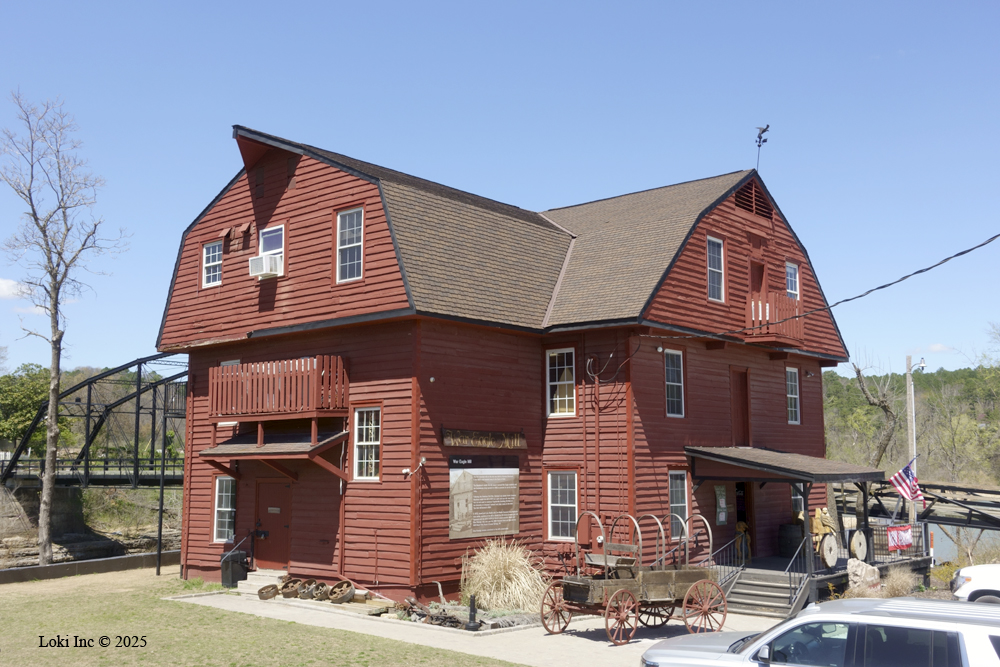
(Jason Baird photo)
I love the history surrounding the mill. Two childhood sweethearts, Sylvanus and Catherine Blackburn, married in Tennessee in 1827. He was 16. Sylvanus headed west to find a place for his family. He decided to settle in a valley named for War Eagle Creek, and in 1832, he and Catherine made their home there. Sylvanus built a two-story house on a hill, overlooking the creek and it still stands today. According to the website, “Find a Grave,” the Blackburns raised 8 children, along with 9 adopted children here, and Sylvanus “built a prayer room and led a worship service every Sunday morning. He was the spiritual and educational leader of the community and formed the first school. He also operated a saw mill, carpentry shop and blacksmith.”
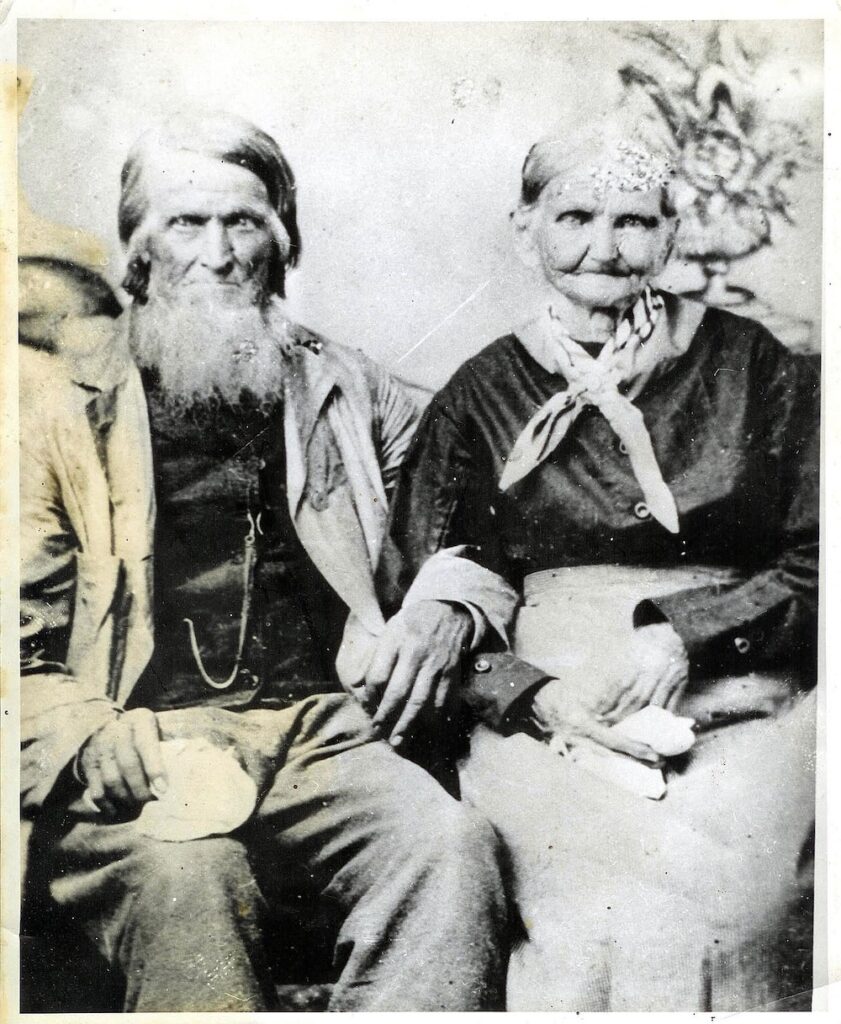
According to history at the War Eagle Mill website, the Blackburns planted corn in the fertile bottomland. They soon decided that transporting their corn to the nearest mill, which lay 25 miles from them in Richland, would be arduous, so they decided to build a mill on the creek and grind their own corn and wheat. Word got out and soon, the farming community surrounding them wanted in on the grinding action.
After losing the entire mill to a flood in 1848, the undeterred Blackburns rebuilt and added a sawmill to the operation. When the Civil War rolled into the valley, the Blackburns had escaped to Texas with all but five of their children. Those five sons joined the Confederacy to fight for the South. Meanwhile, back at the mill, the Fourth Iowa Regiment, under the command of Col. Grenville Dodge, occupied the valley. After the Union left the site in March 1862, Confederate forces arrived and burned the mill to the ground.
One of their sons, James Austin Cameron Blackburn, rebuilt the mill in 1873, and as a result, the site also gained a post office – which was a valuable addition to the community. The mill is credited with rebuilding of northwest Arkansas, because of the sawmill and timber coming from it. For example, Old Main, on the campus of the University of Arkansas in Fayetteville contains lumber from here.
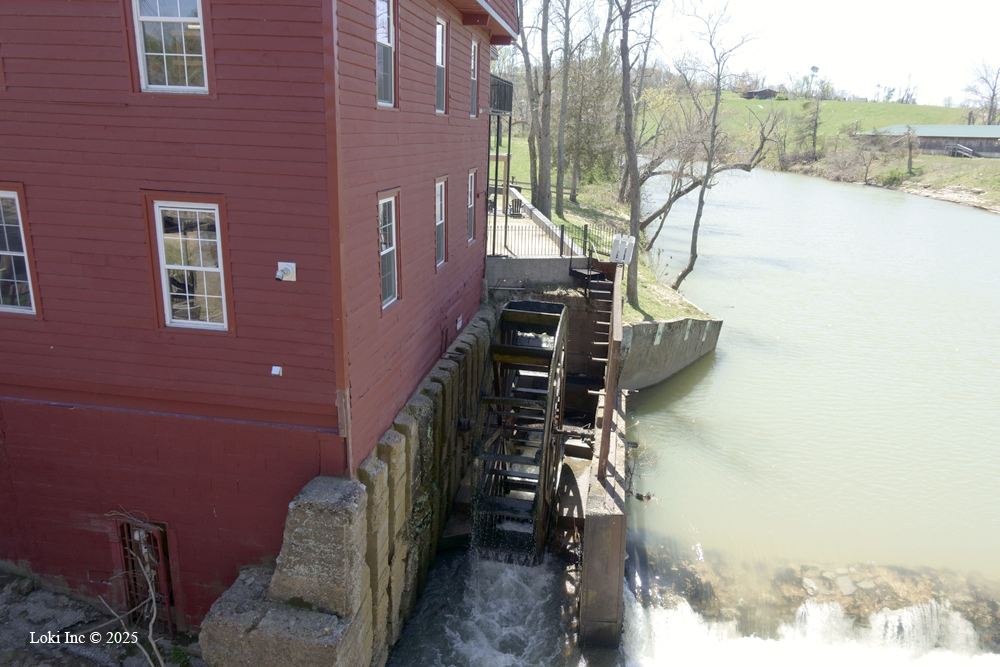
The mill burned again in 1924, and nothing happened onsite – except for the post office activities, which ran until 1967. The Medlin family, along with Zoe Medlin Caywood, purchased the site in 1973 and rebuilt the fourth iteration of War Eagle Mill, based on the design of the third mill.

In 2004, Martin and Elise Roenigh, who own the 1886 Crescent Hotel and Spa and the 1905 Basin Park Hotel in Eureka Springs, purchased the property.
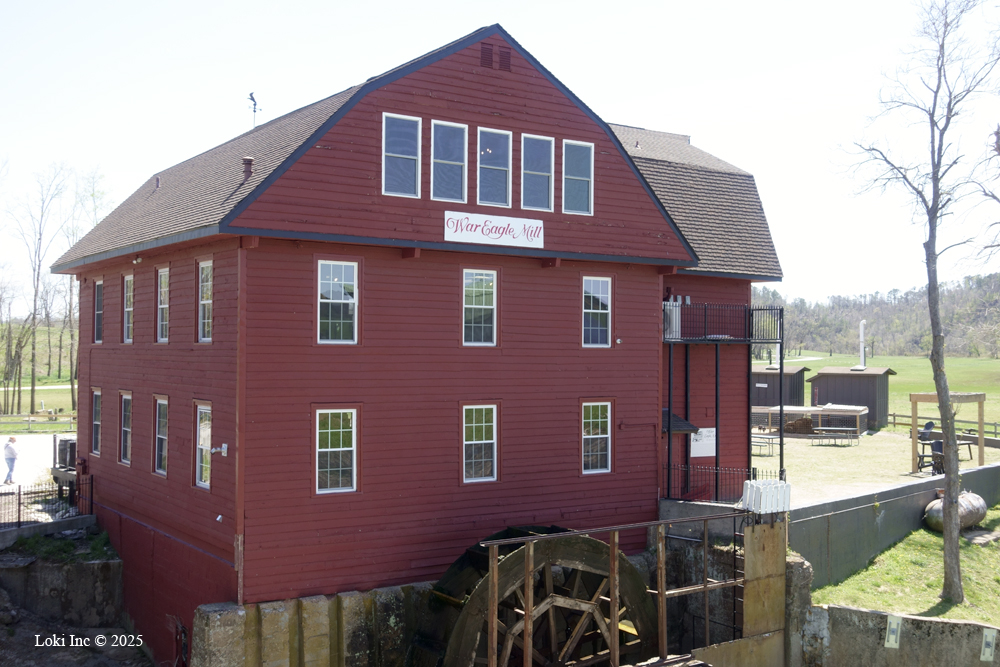
An onsite miller grinds corn daily for tourists to watch the process, which is not for resale. A gift shop on two floors offers local products, as well as mill products. On the top floor, you can enjoy a meal of beans and cornbread at the Bean Palace Cafe, along with sandwiches, biscuits and gravy and other tasty food. We enjoyed the view of the old bridge from our window overlooking the back of the property. We also talked to some bikers who were veterans, who very much enjoyed the cornbread and beans served that day.
War Eagle Bridge and Fair
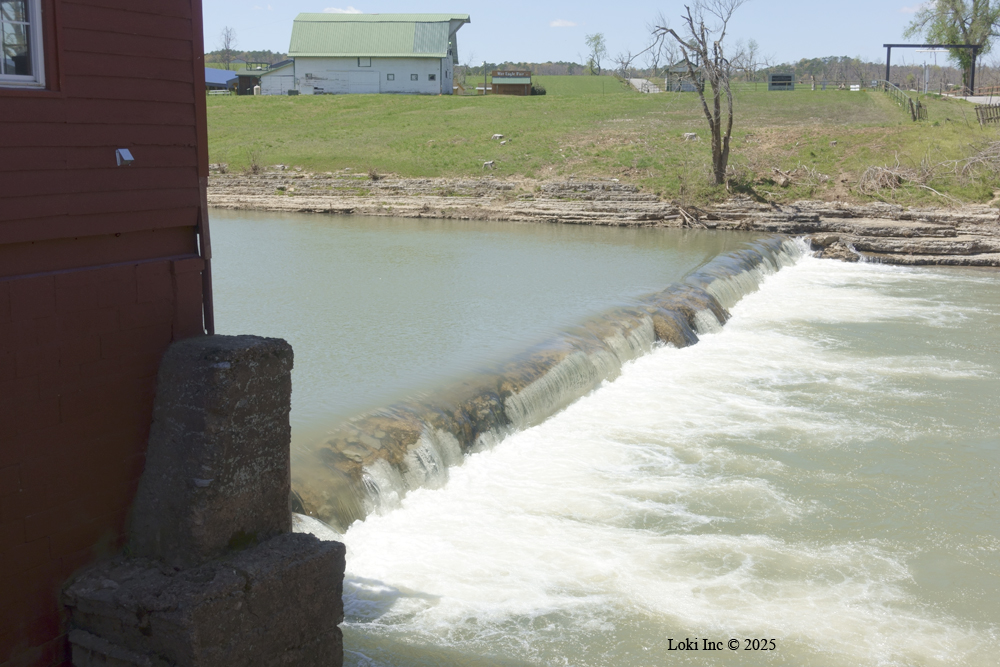
A trip to see the mill is not complete without walking across the War Eagle Bridge, built in 1907. It, too, is listed on the National Register of Historic Places.
In 1954, the first War Eagle Fair attracted visitors and vendors to the site. This year’s fair, which will host almost 300 booths of handcrafted products, will take place from October 16 to 19. I know several people from my neck of the woods who testify that this fair is one of the best.

Discover more information about the War Eagle Mill, which is definitely worth a trip.

